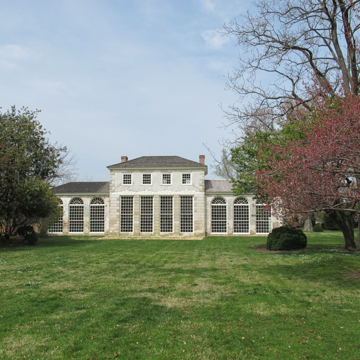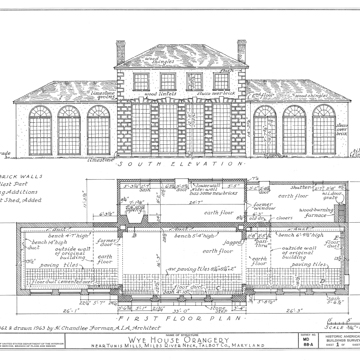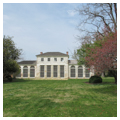The elegant Wye House Orangery is likely the earliest building of its type surviving in the United States. While rare in the eighteenth century, a number of well-known examples of heated greenhouses and orangeries did exist on the estates and plantations of wealthy Americans along the eastern seaboard. Very few of these survive except as below-ground remains or above-ground ruins. The Wye House Orangery is positioned at one end of a bowling green opposite the main house at a slight cant, evidence of their non-concurrent construction. Based on recent documentary and archaeological investigation, the dates for the building’s phased construction have been revised to later in the century. The center two-story section including the one-story rear room, thought to be a living space, possibly for slaves, was constructed after 1770. The building seems to have been expanded into its present form with the addition of wings on the east and west and an extensive hypocaust heating system after 1798. The second floor of the orangery’s middle section functioned as a billiard room and the original table, dating from 1790–1800, survives at the Wintherthur Museum.
You are here
Wye House Orangery
If SAH Archipedia has been useful to you, please consider supporting it.
SAH Archipedia tells the story of the United States through its buildings, landscapes, and cities. This freely available resource empowers the public with authoritative knowledge that deepens their understanding and appreciation of the built environment. But the Society of Architectural Historians, which created SAH Archipedia with University of Virginia Press, needs your support to maintain the high-caliber research, writing, photography, cartography, editing, design, and programming that make SAH Archipedia a trusted online resource available to all who value the history of place, heritage tourism, and learning.












